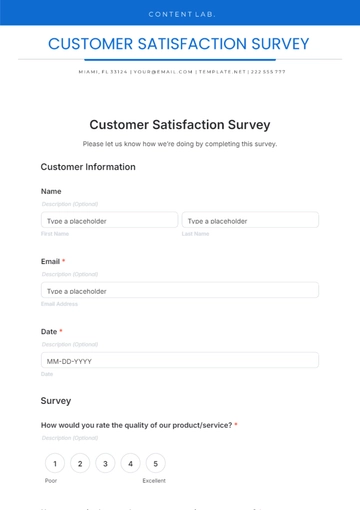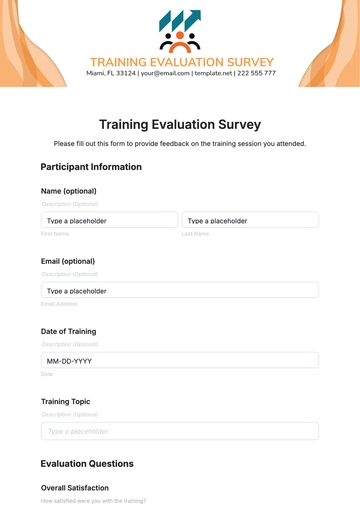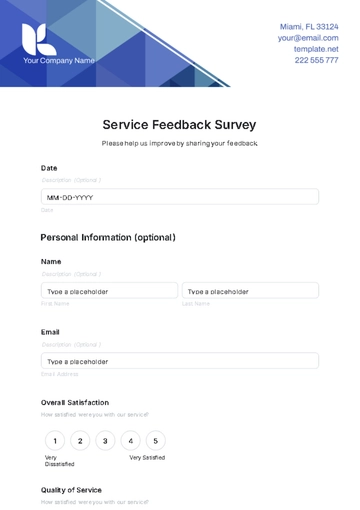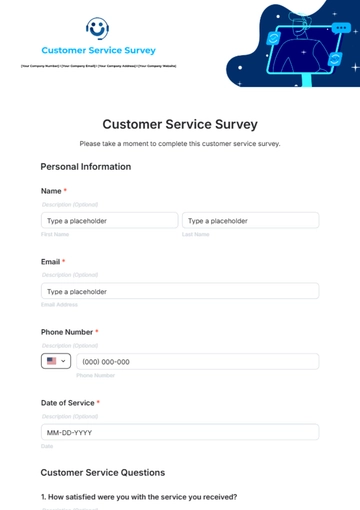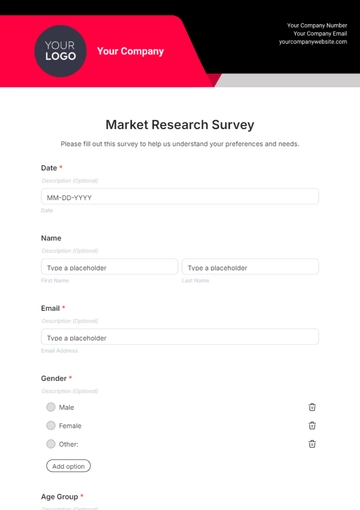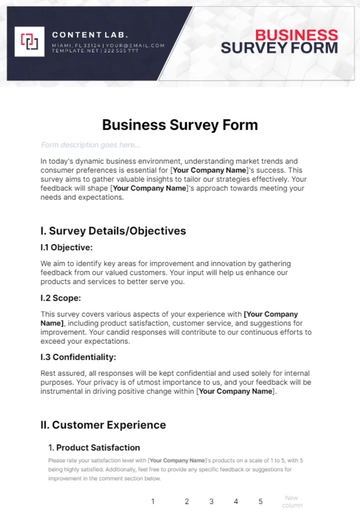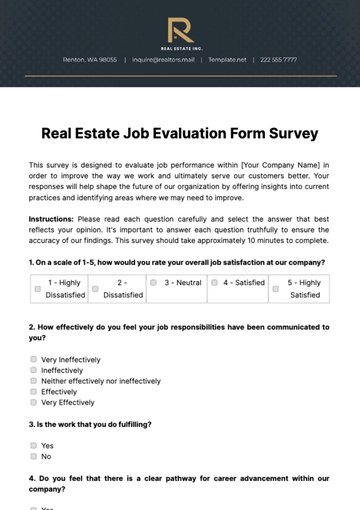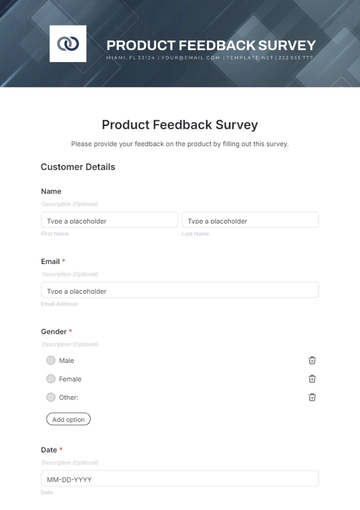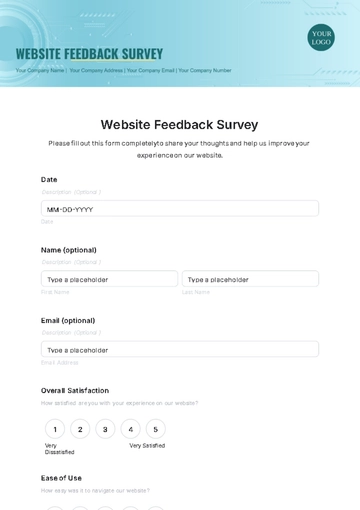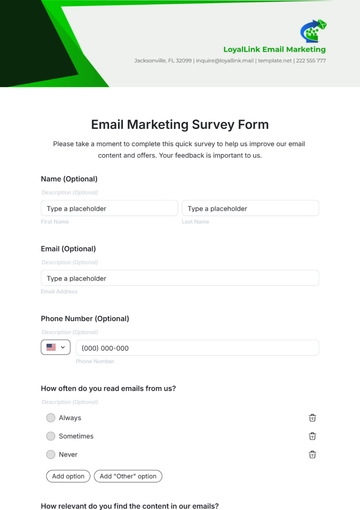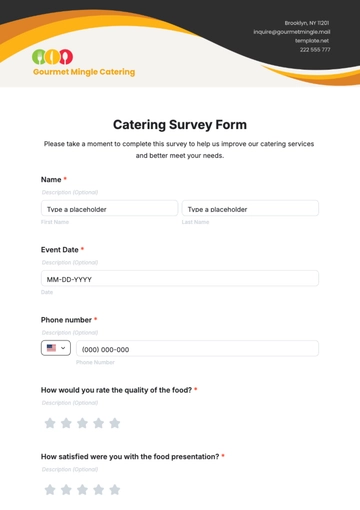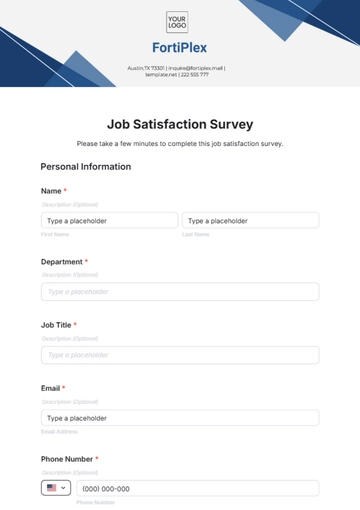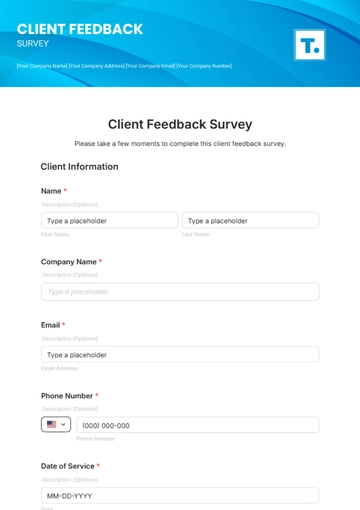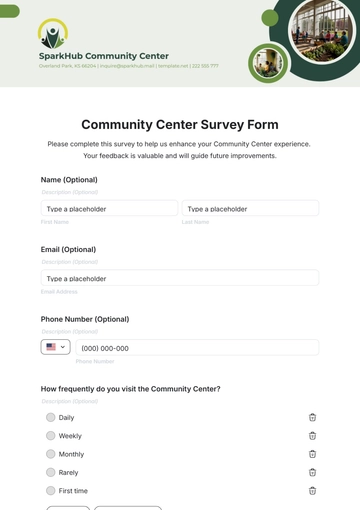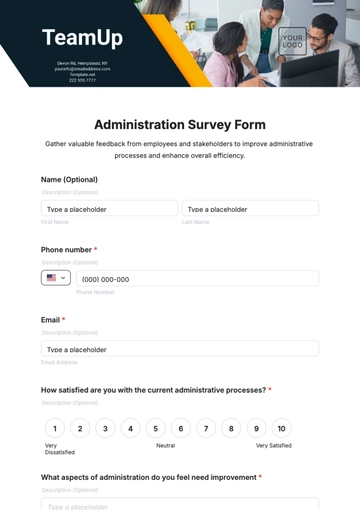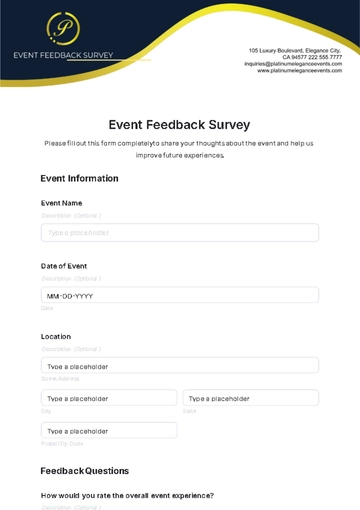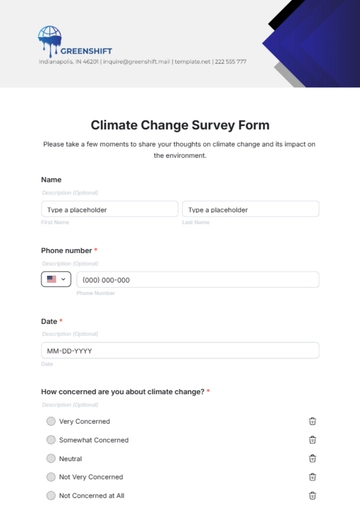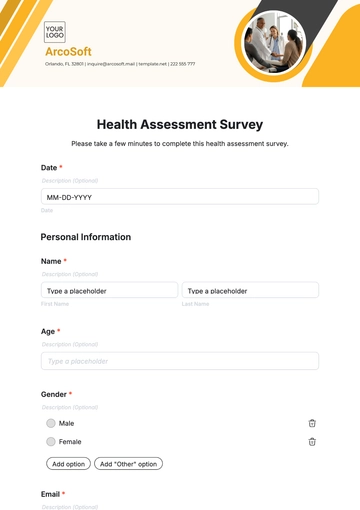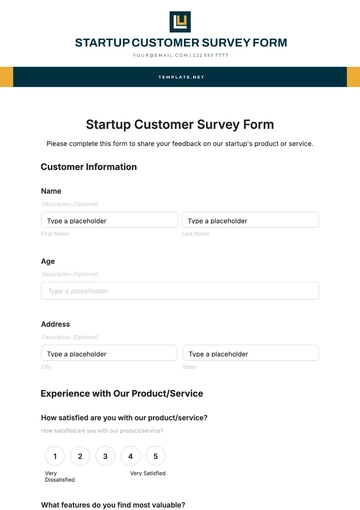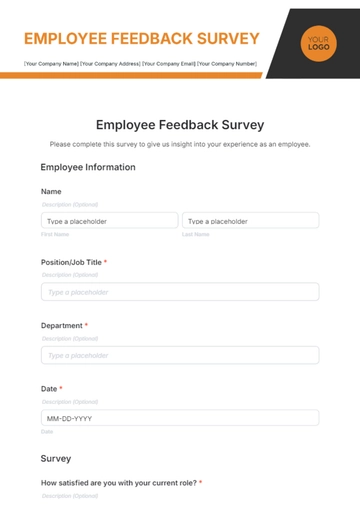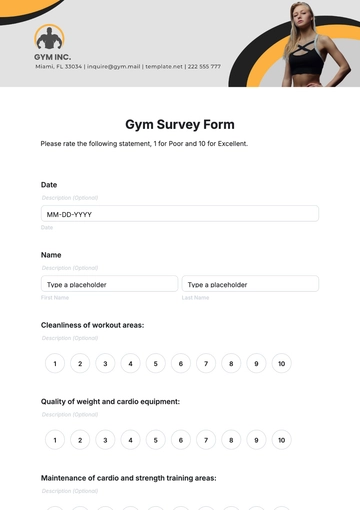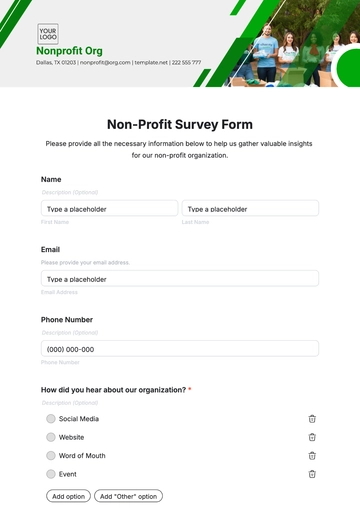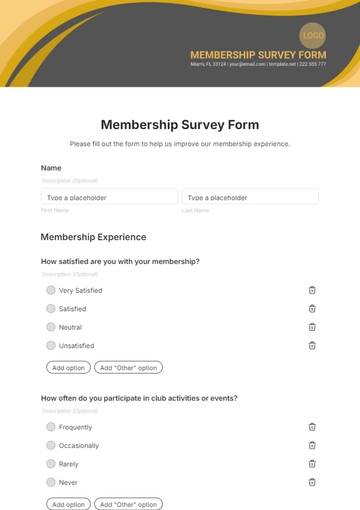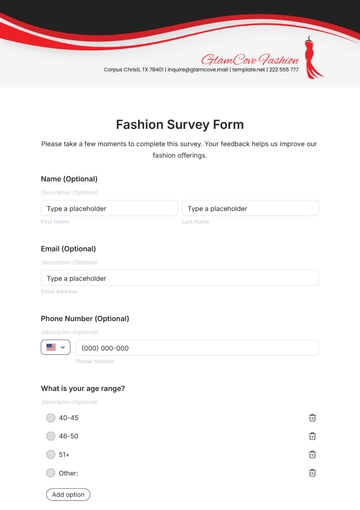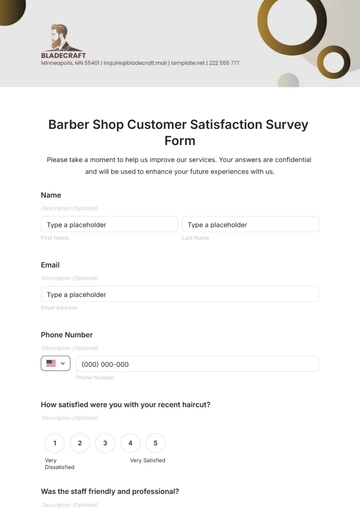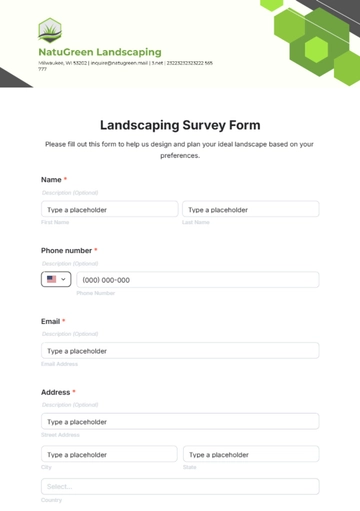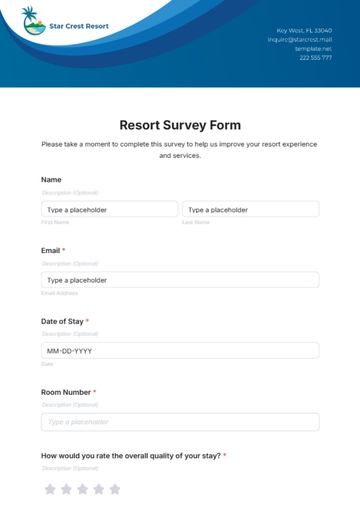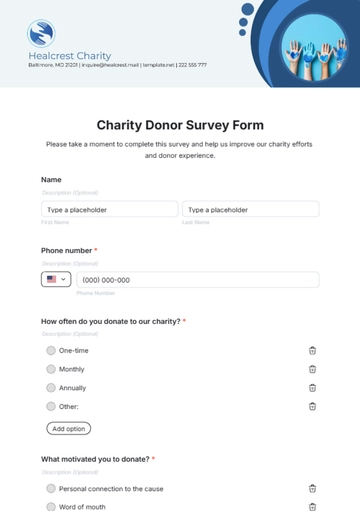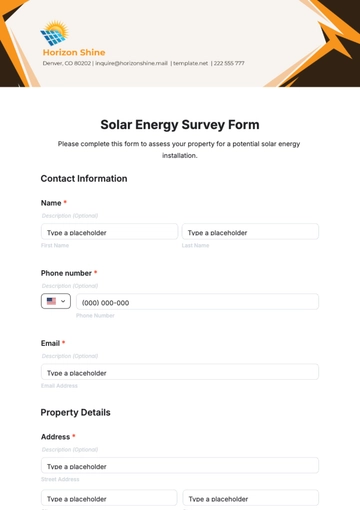Free Opinion Polling Survey Research
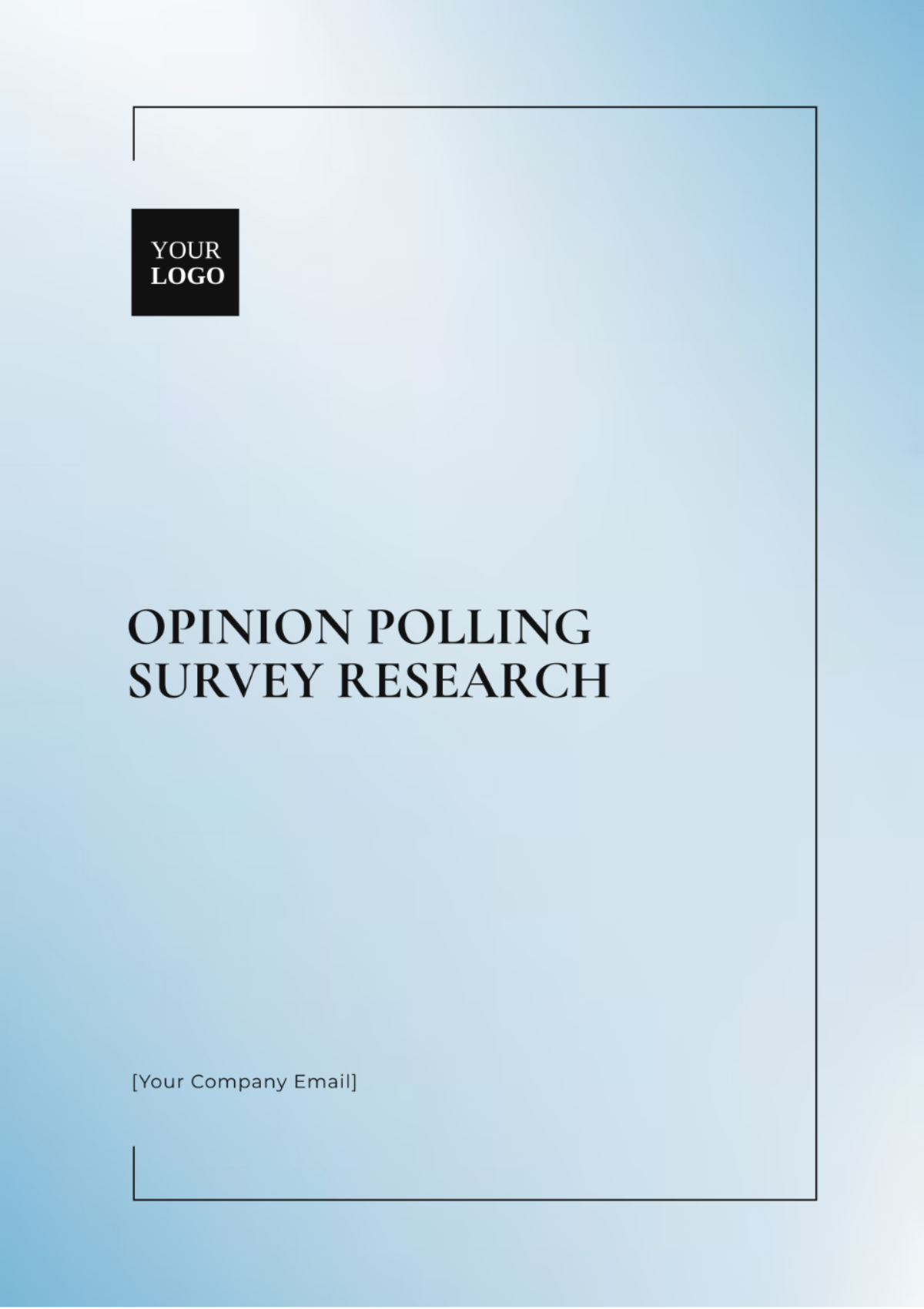
Prepared By: [YOUR NAME]
Date: [DATE]
I. Introduction
Opinion polling survey research is a systematic method of collecting, analyzing, and interpreting data from a sample of individuals to gauge their opinions, attitudes, beliefs, or behaviors on specific topics or issues. This type of research is crucial for understanding public sentiment and forecasting trends in fields such as politics, social issues, consumer behavior, and marketing.
The primary purpose of this survey is to provide valuable insights into public opinion, which can be used to inform policy decisions, marketing strategies, and social interventions. The research objectives include identifying key trends, understanding demographic variations in opinions, and forecasting future behaviors based on current data.
II. Methodology
A. Sampling Process
The sampling process involved selecting a representative population sample to ensure the results are generalizable. A stratified random sampling method was employed to capture the diversity of opinions across different demographic groups, including age, gender, income, education level, and geographic location.
B. Survey Design
The survey was designed using a combination of closed-ended and open-ended questions to capture quantitative and qualitative data. The questions were carefully crafted to avoid bias and ensure clarity.
C. Data Collection Methods
Data was collected through multiple channels, including online surveys, telephone interviews, and face-to-face interactions. This multi-method approach ensured high response rates and better data reliability.
D. Analysis Techniques
The collected data was analyzed using statistical software. Descriptive statistics were used to summarize the data, while inferential statistics helped conclude the population based on the sample. Cross-tabulation and regression analysis were employed to explore relationships and predict trends.
III. Executive Summary
The opinion polling survey provided critical insights into public sentiment on various issues. Key findings include:
Rising Environmental Awareness: There is a notable increase in concern about environmental issues, particularly among younger respondents. This shift highlights a growing urgency for sustainable practices and policies.
Intensified Political Polarization: The survey uncovered significant levels of political polarization, reflecting deepening divisions in political opinions and ideologies.
Growing Demand for Sustainability: Consumer preference for sustainable products has risen, indicating a shift towards environmentally responsible purchasing behaviors and an increasing demand for eco-friendly solutions.
Diverse Social Attitudes: The survey revealed notable variations in social attitudes across different demographic groups, emphasizing the need for tailored approaches to address diverse perspectives and needs.
These findings underscore emerging trends that could influence future policy-making, marketing strategies, and social interventions.
IV. Results and Analysis
Table 1: Demographic Breakdown of Respondents
Demographic | Percentage |
|---|---|
Age 18-24 | 25% |
Age 25-34 | 30% |
Age 35-44 | 20% |
Age 45-54 | 15% |
Age 55+ | 10% |
Figure 1: Public Concern About Environmental Issues by Age Group
Age Group | Concern Level (%) |
|---|---|
18-24 | 70% |
25-34 | 65% |
35-44 | 50% |
45-54 | 40% |
55+ | 30% |
The analysis provides a detailed comparison of opinions across different demographic groups and highlights key trends such as the higher concern for environmental issues among younger respondents.
V. Discussion
Higher Concern Among Younger Respondents: Young adults (18-34) are increasingly concerned about environmental issues, likely due to better access to information, education, and a sense of responsibility for future generations.
Gradual Decline with Age: Concern for environmental issues drops with age, with older respondents (45-54 and 55+) showing less worry. This may be due to different priorities or less exposure to environmental discussions.
Overall Trend: Younger generations are more proactive in adopting sustainable practices, highlighting the need for policies and communication that engage older demographics and support younger advocates of environmental sustainability.
Understanding these trends can inform more effective environmental policies and marketing strategies tailored to different age groups, ensuring that initiatives are inclusive and address the concerns of all segments of the population.
VI. Conclusions and Recommendations
A. Conclusions
The survey data reveals significant generational differences in environmental concern, showing that younger people are much more worried about environmental issues than older ones. This stark generational gap highlights the growing priority of environmental sustainability among the youth and points to a possible disconnect with older generations, suggesting that the emphasis younger generations place on these issues may lead to differing priorities and potential challenges in collaboration across age groups on sustainability efforts.
B. Recommendations
Develop Targeted Environmental Policies: Develop policies that address the environmental concerns of younger individuals, while also engaging older demographics by emphasizing the long-term benefits of sustainability and educating them on the impacts of environmental issues.
Enhance Public Awareness Campaigns: Tailor campaigns to different age groups—innovative solutions for younger audiences and practical benefits for older individuals—to encourage broader adoption of sustainable practices.
Foster Intergenerational Dialogue: Encourage dialogue among different age groups to address environmental issues and foster joint efforts toward sustainability.
Support Sustainable Innovations: Invest in and promote eco-friendly technologies and products that resonate with younger consumers.
Monitor and Adapt Strategies: Regularly review public opinion and adjust strategies to stay relevant and effective across diverse age groups.
VII. Appendices
Appendix A: Survey Questionnaire
Appendix B: Detailed Data Tables
Appendix C: Technical Notes
VIII. References
Smith, J. (2059). Analyzing Public Opinion Polls: Techniques and Strategies. Journal of Public Opinion Research, 12(3), 45-58.
Jones, A., & Miller, B. (2051). Survey Methodology: Designing and Executing Effective Surveys. Survey Research Journal, 15(2), 32-47.
- 100% Customizable, free editor
- Access 1 Million+ Templates, photo’s & graphics
- Download or share as a template
- Click and replace photos, graphics, text, backgrounds
- Resize, crop, AI write & more
- Access advanced editor
Discover how your audience thinks with our Opinion Polling Survey Research Template from Template.net. This customizable and editable template allows you to craft surveys that reflect your specific needs and topics of interest. Easily modify and adapt it to any scenario using our Ai Editor Tool, which ensures your surveys are perfect for gauging public sentiment and receiving actionable insights.
